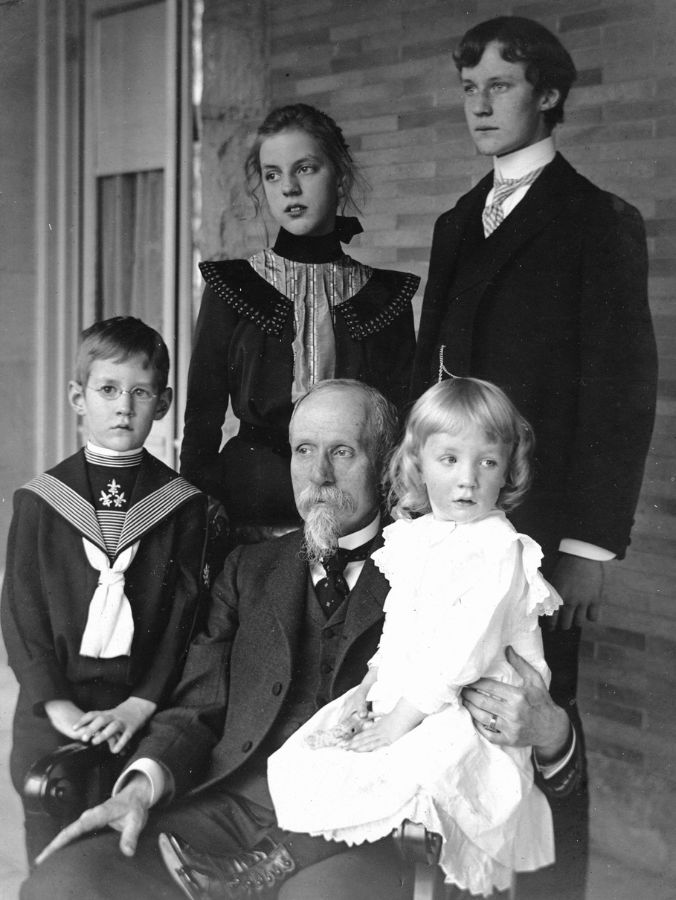-
Who We Are
Who We Are
For the last century, we’ve dedicated ourselves to empowering families like yours to prosper and endure. Like many of the leading families we serve, we have been through our own wealth journey.
Discover Pitcairn -
What We Do
Wealth Momentum®
The families we serve and the relationships we have with them are at the center of everything we do. Our proprietary Wealth Momentum® model harnesses powerful drivers of financial and family dynamics, maximizing the impact that sustains and grows wealth for generations to come.
Explore - Insights & News

Have you thought about whom you’d want to inherit your blue sapphire ring, the Rothko painting in your study, or your vintage baseball card collection? Even if you’ve added beneficiaries to your
accounts and created trusts to pass down your wealth, you may not have done any formal estate planning for your jewelry, artwork, and other valuable collectibles, also known as your tangible
personal property.
Only 44% of collectors had taken legal steps to leave their collections to their intended heirs, according to a 2023 survey by the insurance company Chubb. Checking this task off your list is relatively simple — in fact, it can even be fun. Here’s what we recommend doing and why.
Make Your List
Some items may come to mind immediately, but we also give our clients a checklist to help them create a comprehensive inventory. Often, people don’t realize that an item has value beyond the
sentimental, or that an Hermès bag they haven’t used in years has become a collectible.
Once you’ve created your list, your insurance specialist will review your coverage for these items. They’ll also help you update your list annually (or whenever you buy, sell, or give away a collectible).
Examine Your Insurance
While you may collect items primarily out of passion, the financial risks of underinsuring your collections may be significant. About 20% of ultra-high net worth individuals’ wealth is in luxury collectibles, according to Knight Frank’s 2024 Wealth Report. Compare the value of your collectibles to your coverage on existing policies. Homeowners insurance provides little to no coverage for
collectibles, so there may be items you need to insure as scheduled property if you haven’t already. Insurers may require appraisals to maintain or add coverage.
Review insurance requirements for the storage, transport, display, and handling of your collectibles. Further, you may need to update your documentation for each item, including photos, videos, and any evidence of their provenance.
Obtain Appraisals and Evaluate Coverage
While fine jewelry is often straightforward to appraise — precious gems and metals are easily valued — other items’ value is more subjective. Subjective value can be shockingly high if your item is the last piece someone needs to complete their collection. Other times an item may have lost significant value because it’s fallen out of fashion. In addition, the same item can legitimately have different valuations for insurance, tax, and collateral or liquidation purposes. Appraisals can also help identify hidden treasures. People have discovered that a portrait of their grandmother was painted by a famous artist, or that their grandfather’s watch is a multimillion-dollar Patek Phillipe. Appraisals and insurance do have a cost, and whether to appraise and insure any item is always up to you (assuming the item isn’t collateral for a loan).
Document Your Wishes
You may have promised your antique silverware to a beloved housekeeper — your children wouldn’t know what to do with it. (They might drop it off at the nearest thrift store!) In some families, these informal, spoken arrangements are sufficient.
Some people feel better leaving nothing to chance, and others know their heirs may have a conflict over items not left to a specific person in writing. In these cases, you might choose to document your wishes in your will or revocable trust. You can also use a side letter that accompanies your will. Will or trust instructions are more secure but require you to update
your estate plan with your attorney whenever your wishes change. A side letter is simpler; you can write it yourself and update it anytime.
Ask for Input
Ask your loved ones if any items are especially important to them. You might have no idea that your granddaughter admires your Swiss cuckoo clock and would still miss it years later if it went to someone else. Something else to consider is that a seemingly minor collection, like the souvenir mugs acquired on family vacations, can become more sentimentally valuable to your loved ones when you’re gone. Even items that aren’t monetarily valuable may be worth documenting and designating a chosen beneficiary.
Other times, you might learn that your intended heirs don’t want certain items despite their monetary value. About two in three people who inherited a collection weren’t interested in it, according to a 2017 survey of high-net-worth investors by UBS Investor Watch. In such cases, rather than burden your loved ones with the ongoing costs to store and insure your medieval art collection, you might consider placing it in a charitable trust. You’ll be able to enjoy your collection now and have it donated upon your passing. As with individuals, you’ll want to find a recipient that is willing and able to accept your collection.
Share Your Wishes
It can be rewarding to discuss the importance of your possessions with their intended recipients. These talks can be a time to reminisce and share lesser-known stories from your personal or family history. Further, if you don’t have these discussions with your heirs, they may not realize the value of the personal property you leave them. Many people have heard of Fabergé eggs, but fewer people could identify one. Even fewer know that Peter Carl Fabergé was responsible for the enameled clock with the intricate gold flowers that sits on your office desk.
Plan for the Best
Rather than leave things to chance, include your collectibles in your estate plan. Know what you have, how much it’s worth, and whom it’s important to. This way, you can properly insure and protect these items during your lifetime and make sure they find a good home.
Disclaimer: Pitcairn Wealth Advisors LLC (“PWA”) is a registered investment adviser with its principal place of business in the Commonwealth of Pennsylvania. Registration does not imply a certain level of skill or training. Additional information about PWA, including our registration status, fees, and services is available on the SEC’s website at www.adviserinfo.sec.gov. This material was prepared solely for informational, illustrative, and convenience purposes only and all users should be guided accordingly. All information, opinions, and estimates contained herein are given as of the date hereof and are subject to change without notice. PWA and its affiliates (jointly referred to as “Pitcairn”) do not make any representations as to the accuracy, timeliness, suitability, completeness, or relevance of any information prepared by any unaffiliated third party, whether referenced or incorporated herein, and takes no responsibility thereof. As Pitcairn does not provide legal services, all users are advised to seek the advice of independent legal and tax counsel prior to relying upon or acting upon any information contained herein. The performance numbers displayed to the user may have been adversely or favorably impacted by events and economic conditions that will not prevail in the future. Past investment performance is not indicative of future results. The indices discussed are unmanaged and do not incur management fees, transaction costs, or other expenses associated with investable products. It is not possible to invest directly in an index. Projections are based on models that assume normally distributed outcomes which may not reflect actual experience. Consistent with its obligation to obtain “best execution,” Pitcairn, in exercising its investment discretion over advisory or fiduciary assets in client accounts, may allocate orders for the purchase, sale, or exchange of securities for the account to such brokers and dealers for execution on such markets, at such prices, and at such commission rates as, in the good faith judgment of Pitcairn, will be in the best interest of the account, taking into consideration in the selection of such broker and dealer, not only the available prices and rates of brokerage commissions, but also other relevant factors (such as, without limitation, execution capabilities, products, research or services provided by such brokers or dealers which are expected to provide lawful and appropriate assistance to Pitcairn in the performance of its investment decision making responsibilities). This material should not be regarded as a complete analysis of the subjects discussed. This material is provided for information purposes only and is not an offer to sell or the solicitation of an offer to purchase an interest or any other security or financial instrument.





